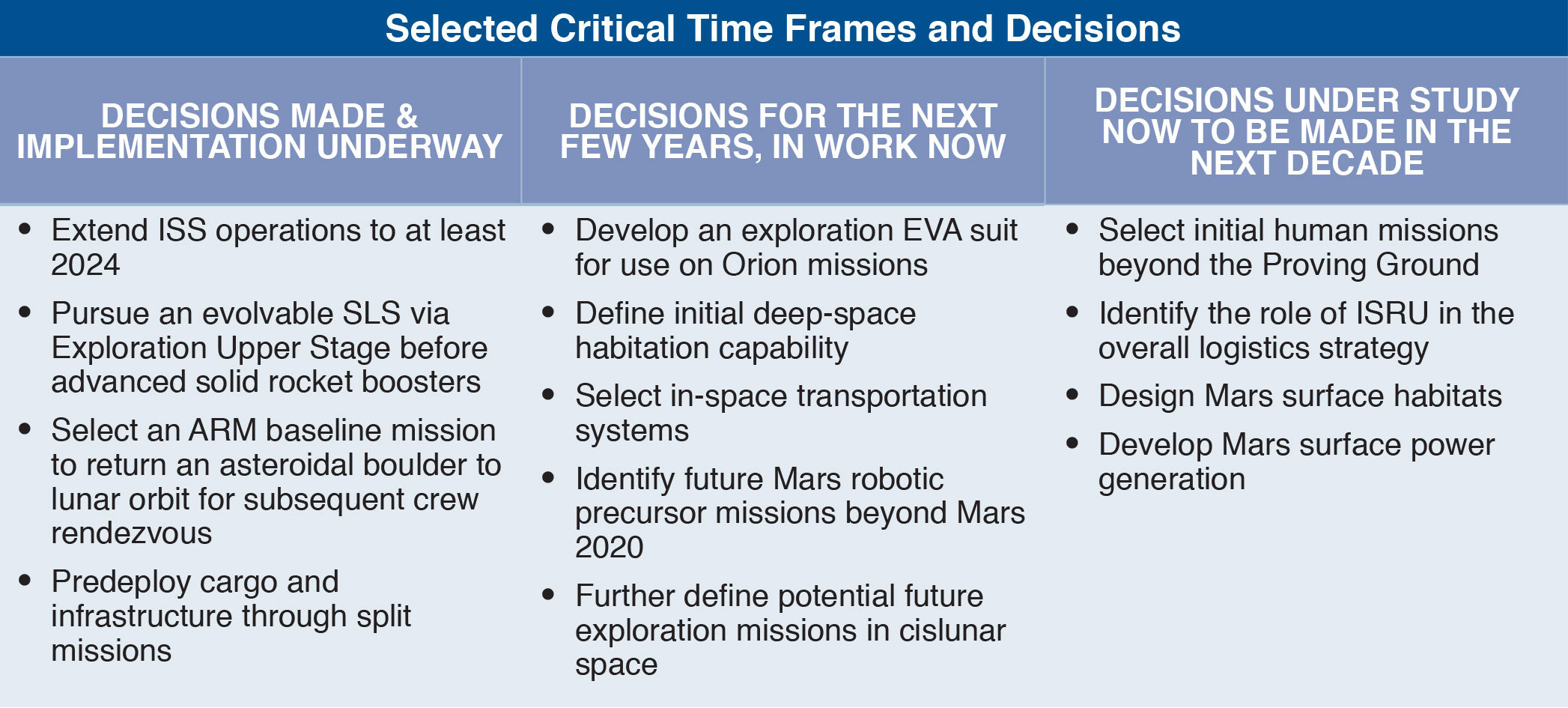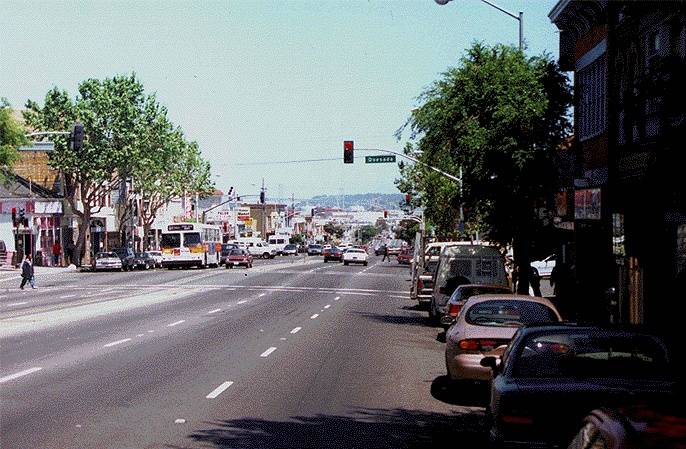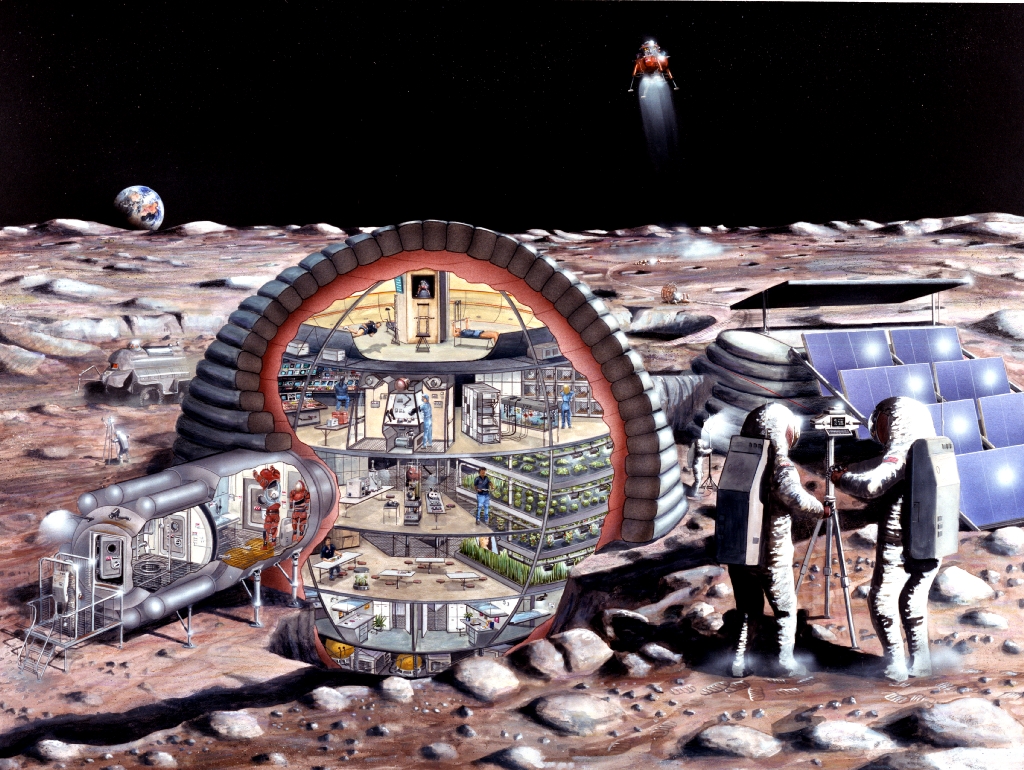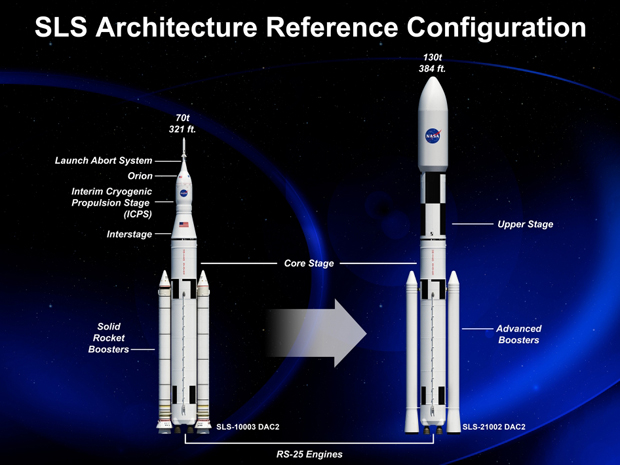New Mars Forums
You are not logged in.
- Topics: Active | Unanswered
Announcement
#101 2015-10-25 16:44:17
- SpaceNut
- Administrator
- From: New Hampshire
- Registered: 2004-07-22
- Posts: 29,861
Re: The SLS: too expensive for exploration?
Space x has after reading the sites Launch Manefest
Our launch manifest is populated by a diverse customer base, including space station resupply missions, commercial satellite launch missions, and US government science and national security missions.
Falcon 9 launches from Vandenberg & Cape Canaveral
Launch Date Customer
4/27/2015 Thales Alenia Space
4/14/2015 NASA Resupply to ISS (Flight 6) Dragon
3/1/2015 Asia Broadcast Satellite/EutelSat
2/11/2015 US Air Force (DSCOVR)
1/10/2015 NASA Resupply to ISS (Flight 5) Dragon
9/21/2014 NASA Resupply to ISS (Flight 4) Dragon
9/7/2014 AsiaSat-6
8/5/2014 AsiaSat-8
7/14/2014 ORBCOMM
4/18/2014 NASA Resupply to ISS (Flight 3) Dragon
1/6/2014 Thaicom (Thailand)
12/3/2013 SES (SES-8)
9/29/2013 MDA Corp. (Canada)
3/1/2013 NASA Resupply to ISS (Flight 2) Dragon
10/7/2012 NASA Resupply to ISS (Flight 1)
5/22/2012 NASA COTS (Demo 2/3) Dragon
12/8/2010 NASA COTS (Demo 1) Dragon
6/4/2010 Falcon 9 Inaugural Test Flight
Flight tally
Nasa 8
other 9
Only half its funds coming from Nasa plus a little more from other governement funded agencies, with the remaining being from outside of the US...
Offline
Like button can go here
#102 2015-10-26 04:37:34
- Tom Kalbfus
- Banned
- Registered: 2006-08-16
- Posts: 4,401
Re: The SLS: too expensive for exploration?
That's not bad. SpaceX might even beat NASA to Mars if NASA is not careful, or more precisely if it is too careful perhaps!
Offline
Like button can go here
#103 2015-10-30 17:44:41
- SpaceNut
- Administrator
- From: New Hampshire
- Registered: 2004-07-22
- Posts: 29,861
Re: The SLS: too expensive for exploration?
I have pull this information from lots of places....
http://www.nasaspaceflight.com/2015/09/ … mars-2039/

Status Update to SLS Evolvability TIM presentation showing a total of 41 SLS flights from 2018 through 2046 to build-up to and support human Phobos and Mars surface missions.
Then, 2023 and 2024 would see single manifested Cis-lunar flights for the EM-4 and EM-5 missions before the co-manifested EM-6 mission in 2025, which would perform the Asteroid Redirect Crewed Mission.
http://www.nasa.gov/sites/default/files … TAGGED.pdf
This is the start of the 130t flights indicated on page 35.
http://planetary.s3.amazonaws.com/sites … Planet.pdf
page 18
2020: Flight test of a 50 kWe Solar Electric Propulsion (SEP) system in interplanetary space with crewed docking operations in cis-lunar space. This could be achieved via the Asteroid Redirect Mission (ARM) or a dedicated technology demonstration mission without an asteroid.
2025 & 2027: Astronauts perform long-duration stays in a Deep Space Habitat (DSH) in cis-lunar space.
2026: Robotic technology demonstration at Mars to validate the use of Supersonic Retro-Propulsion (SRP) for entry, descent, and landing.
EMs-7 and -8, the last of the EM missions identified to date, would follow in 2026 and 2027.
2033 human Phobos mission, 2039 human Mars surface mission, and 2043 follow-up Mars surface mission.
MARS ORBIT/PHOBOS MISSION SUMMARY
Precursor to Mars landing mission Validates method for getting to Mars orbit and back
Uses Solar Electric Propulsion (SEP) tugs to pre-position assets in the Mars system prior to crew arrival ~2 ½ year round trip with a crew of four, including ~300 days at Phobos
HARDWARE:
Vehicles # Vehicles per Mission
SLSs, Block II 4
100 kWe Solar Electric Propulsion tugs 2
Phobos Transfer stage (to get crewed Orion from high Mars orbit to Phobos and then back to high orbit)
Trans-Earth Injection stage (for returning crew to Earth)
Mars Orbit Insertion stage 1
Deep Space Habitat 1
Phobos Habitat (common design with Deep Space Habitat)
Orion crew capsule 1
TECHNOLOGY DEVELOPMENT REQUIRED:
SLS Block II
Exploration Upper Stage with docking and engine restart capability
100 kWe Solar Electric Propulsion tug
Phobos/Deep Space Habitat
In-space Chemical Propulsion Stages (Phobos/Deimos Transfer Stage)

Under the first option, a series of 9 SLS launches (between 2028 and 2033) would be needed for the Phobos mission – with one additional SLS flight of Orion needed in 2035 to return the Phobos crew to Earth after they return to Cis-lunar space.
Thus, the total number of SLS flights needed for the Phobos mission under option one stands at 10
11 SLS flights (between 2034 and 2039) for the first human Mars surface mission would then take place, followed by one SLS flight of Orion in 2042 to return the first Mars surface crew from Cis-lunar space – for a total of 12 SLS flights. With one additional SLS flight in 2046 needed to return the second Mars surface crew to Earth from Cis-lunar space.
http://www.nasaspaceflight.com/2015/09/ … ons-2030s/
The first option, dubbed the “SEP-Chemical option,” would see Solar Electric Power (SEP) units used to pre-deploy elements to near-Mars space before human Phobos and Mars transit missions begin. This pre-deployment would allow needed supplies and equipment to already be in a stable near-Mars orbit prior to the departure of a crew from Cis-lunar space and would make use of the more economical but slow SEP technology.
The crew portion of these Phobos and Mars surface missions would then make use of standard chemical propulsion stages to decrease the transit time from Earth to Mars.
The JPL study team explored a short stay mission on Mars (24 days) as the next logical step.
Six Vehicles to Enable Crewed Missions to Mars Surface (Short Stay)
Vehicles # Vehicles per Mission
Orion 1
SLS 6
SEPTug 2
DeepSpace Habitat 2
In-Space ChemicalPropulsion Stages 3
Mars Lander 1
MARS SHORT-STAY MISSION SUMMARY:
Cargo and crew travel to Mars using methods from the 2033 mission
Additional launches needed to position the landing vehicle in high Mars orbit to await crew arrival
A crew of two lands on Mars using supersonic retro-propulsion (no parachutes)
Return of the crew to high Mars orbit is achieved via a two-step ascent using the Mars ascent vehicle and an additional chemical booster stage
HARDWARE:
Vehicles # Vehicles per Mission
SLSs Block II 6
100 kWe Solar Electric Propulsion Tugs 2
Exploration Upper Stage 1
Trans-Earth Injection stage 1
Mars Orbit Insertion stage 1
Deep Space Habitats 2
Orion crew capsule 1
Mars Ascent Vehicle 1
Mars ascent vehicle boost stage 1
Mars lander (23 tons useful landed payload) 1
TECHNOLOGY DEVELOPMENT REQUIRED:
Mars Ascent Vehicle
Mars lander with supersonic retro-propulsion

In fact, the main difference between the two options comes in the number and configuration of the various propulsion elements.
Under the Hybrid option, a total of zero Cryogenic Propulsion Stages will be needed, as opposed to 12 needed under the SEP-Chemical option.
However, while zero Hypergolic Bi-Prop Stages would be needed for the SEP-Chemical option, a total of six of these stages would be needed for the Hybrid option.
Likewise, the Hybrid option would see six 425 kW SEP Vehicles, whereas 14 281 kW SEP vehicles would be needed under the SEP-Chemical option.
Lastly, approximately 19 additional tons of xenon would be needed for the Hybrid option over the SEP-Chemical option.
In 2031, the Mars Transit Hab (or Deep Space Hab) would be launched, followed in 2032 by the launches of the Mars Orbit Insertion (MOI) and Trans-Mars Injection (TMI) stages in two separate SLS missions.
The launch of the first Phobos crew to the Transit Hab would take place in 2033.
Assuming a full duration, approximately 500 day mission, the final SLS launch needed for the human Phobos mission would occur in 2035, when an SLS rocket would launch and Orion crew capsule to retrieve the Phobos crew following their return to Cis-lunar space.
In all, this campaign would see the SLS deliver a total mass of 394.5t to Cis-lunar space.


One-Year Surface Mission
10 SLS Launches
Builds on the short-stay architecture but adds two additional landers bringing the total to three landers
Four additional SLS launches (2 per lander) are needed bringing total launches to 10 SLS
One lander carries a crew of 4 to the surface
One lander will carry the habitat and the other lander a pressurized rover and other supplies
Ascent stage already fueled to lift crew of 4 to the LMO and then boosted to HMO
NASA would attempt its first long-duration stay on Mars in 2043, choosing a site that would become a permanent base. Over time, infrastructure could be built up at this location, which would see a regular crew rotation to sustain a continuous human presence. Under this scenario:
NASA would send a new crew to Mars every 4 years.
The SLS launch rate would be one launch every 6 months.
NASA would send two cargo landers with each crewed mission.
NASA would build up infrastructure on Mars to provide power, in-situ resource utilization, food production, and habitable volume. The Mars program would evolve to put in place a reusable transportation architecture between Earth and Mars with an increased flight rate. With the eventual acquisition of a water source on Mars, NASA could achieve a permanent presence with an Antarctica-type population.
Offline
Like button can go here
#104 2015-12-28 20:03:07
- SpaceNut
- Administrator
- From: New Hampshire
- Registered: 2004-07-22
- Posts: 29,861
Re: The SLS: too expensive for exploration?
Sorry about that last large posting but Nasa needs to get with the program and soon or its going to be second to cis-lunar the moon this time.
Flight around Moon to be carried out after 2025, according to new Russian space program
"The Moon program is the most important. It is planned to allocate 205.1 billion rubles for its implementation. Two large stages of implementing this program are planned. Five automatic Moon spacecraft are planned to be launched from 2019 to 2024 at the Luna-Avtomat stage," Komarov said. The draft Federal Space Program until 2025 envisages allocating 38.5 billion rubles for Moon projects, Russian Federal Space Agency Roscosmos reports....

Sure its a departure to what they are known for...
I know this may be just gas but what if its not....
With a bit of a treak the Dragon cargo & the version 2 could be made to do just this same mission.....
Offline
Like button can go here
#105 2016-01-08 15:34:58
- Tom Kalbfus
- Banned
- Registered: 2006-08-16
- Posts: 4,401
Re: The SLS: too expensive for exploration?
Four additional SLS launches (2 per lander) are needed bringing total launches to 10 SLS
One lander carries a crew of 4 to the surface
One lander will carry the habitat and the other lander a pressurized rover and other suppliesAscent stage already fueled to lift crew of 4 to the LMO and then boosted to HMO
NASA would attempt its first long-duration stay on Mars in 2043, choosing a site that would become a permanent base. Over time, infrastructure could be built up at this location, which would see a regular crew rotation to sustain a continuous human presence. Under this scenario:
NASA would send a new crew to Mars every 4 years.
The SLS launch rate would be one launch every 6 months.
NASA would send two cargo landers with each crewed mission.NASA would build up infrastructure on Mars to provide power, in-situ resource utilization, food production, and habitable volume. The Mars program would evolve to put in place a reusable transportation architecture between Earth and Mars with an increased flight rate. With the eventual acquisition of a water source on Mars, NASA could achieve a permanent presence with an Antarctica-type population.
2043 huh? That is the same distance in time from the middle of World War I to World War II.
This picture represents the state of the air in aerospace technology during World War I.
This picture represents the state of the art of World War II aerospace technology.
Now imagine this is 1916, and we assembled a team of Aerospace engineers to design those World War II aircraft, could it be done?
Last edited by Tom Kalbfus (2016-01-08 15:35:48)
Offline
Like button can go here
#106 2016-01-08 21:21:47
- SpaceNut
- Administrator
- From: New Hampshire
- Registered: 2004-07-22
- Posts: 29,861
Re: The SLS: too expensive for exploration?
I think one of the evolutions was from wood/ canvas to metals which was one thing that I can see from the images.
For sls the changes would seem to be the means to get to orbit to orbit and back with cargo loading being done by ion drive.
The next is mission duration without support from the earth surface on a regular scheduel to resupply what we need....
Offline
Like button can go here
#107 2016-01-10 13:18:40
- Tom Kalbfus
- Banned
- Registered: 2006-08-16
- Posts: 4,401
Re: The SLS: too expensive for exploration?
I think one of the evolutions was from wood/ canvas to metals which was one thing that I can see from the images.
For sls the changes would seem to be the means to get to orbit to orbit and back with cargo loading being done by ion drive.
The next is mission duration without support from the earth surface on a regular scheduel to resupply what we need....
It just seems to me that waiting til 2043, when I will be 76 years old, seems like an awful long time to wait just to see 4 people walk on Mars. World War I is not long after Wilbur and Orville flew their Wright Flier, I think the progress they saw until 1943 was a lot more that NASA is assuming in this plan. I think by 1943, we could do a lot more than fly four people across the Atlantic.
I think the point is, I was born at an inflexion point in history, all the years before I was born, since the beginning of the 20th century was marked by the rapid advance of technology on all fronts, and suddenly after I was born, the brakes were applied and everything stayed pretty much the same, with only incremental developments in existing technology, which is what NASA seems to be assuming here. So why was the point of my birth so important as to cause the brakes to be applied soon after? Did they say, lets stop innovating? Why does the 21st century thus far look so much like the late 20th century. 50 years after the dawn of aviation, we had transcontinental flights across the Atlantic, but we're progressing through the so called "Space Age" like a crippled ant! I guess I am spoiled, throughout my childhood, I expected a great deal more technological progress that what actually occurred, children who were born around the year 2000, have grown quite accustomed to this nonprogress, it seems perfectly natural to them, while I was born when World War II was only a generation away.

Seattle 1916
1926
1936
1946.jpg)
1956
1966
1976
This sequence of pictures represents some of the technological progress up until I reach the age of 9
1986
1996
2006
2016
The 21st century has been rather mundane compared to what I was expecting.
Last edited by Tom Kalbfus (2016-01-10 13:47:37)
Offline
Like button can go here
#108 2016-01-10 18:45:46
- SpaceNut
- Administrator
- From: New Hampshire
- Registered: 2004-07-22
- Posts: 29,861
Re: The SLS: too expensive for exploration?
The auto industry was about changing the models appearance, color and other specifics of horse power, cyclinder count to gain more market as we did the computer industry with the processor, memory, hard drive size and other outputing features....on a quick turn schedeul to keep raking in the bucks until satuation occurs and there are no new buyers of the products.
I do agree that technology is stagnent, as R&D costs more than being able to produce space activity which at best dauntingly slow but its commercial space that must lead not Nasa for markets to change and there must be competition to create a product without a contract to do the work....
Such as we all ave known since shuttle that a new capsule is needed. Shuttle was cancelled in 2004 and stopped being used in 2010 so where is the manned capsule....still not here except for the Russians to buy a seat on...whats up with that Nasa and commercial industry....They have all had plenty of time to make one...
Offline
Like button can go here
#109 2016-01-11 10:12:33
- Tom Kalbfus
- Banned
- Registered: 2006-08-16
- Posts: 4,401
Re: The SLS: too expensive for exploration?

What is the big deal about this thing any way? Why is it taking so long to produce a space capsule, which doesn't look all that impressive? NASA is acting like it is a Herculean task to build this thing, when in the past they knocked together Mercury, Gemini, and Apollo capsules without too much trouble at all? I would assume the expensive thing, would be the rocket that lifts it into orbit, not this capsule!
I also noticed that the solar panels are missing.
Last edited by Tom Kalbfus (2016-01-11 10:15:20)
Offline
Like button can go here
#110 2016-01-11 10:19:38
- GW Johnson
- Member
- From: McGregor, Texas USA
- Registered: 2011-12-04
- Posts: 6,097
- Website
Re: The SLS: too expensive for exploration?
Spacenut:
Actually there are two manned capsules in the works and rather far along. They are the Boeing CST-100 and the Spacex Dragon version 2. The reason they haven't already flown is that these are NASA contracts done to NASA's rules and according to NASA's schedule.
If it weren't for that customer-demanded slow pace, I'm pretty sure Dragon could have already flown manned before now, Spacex being a newcomer to the government spaceflight business. The only long pole on the tent for it was wringing-out the big SuperDraco thrusters for it. That was finished over a year ago.
Boeing is a long-time NASA favorite, and knows very well how to "do it the NASA way". Actually, it now contains all the former capsule contractors that NASA grew up with, for whatever that might really be worth. That kind of history is hard to beat, although there is no advantage to NASA dealing with a monopoly supplier.
I was disappointed when the Dreamchaser small spaceplane was deleted from the competition. That outfit could have become another Spacex. Spaceplanes are tougher to do than capsules for LEO operations, and will always deliver less payload for the launched mass, but at least potentially offer a little more mission flexibility, mostly in terms of landing sites and recovery effort.
GW
GW Johnson
McGregor, Texas
"There is nothing as expensive as a dead crew, especially one dead from a bad management decision"
Offline
Like button can go here
#111 2016-01-11 12:46:54
- Tom Kalbfus
- Banned
- Registered: 2006-08-16
- Posts: 4,401
Re: The SLS: too expensive for exploration?
A space capsule could be just as fully reusable as a space plane. One of the advantages of a space plane is it can land on a runway, the advantage of a space capsule is it does not need to land on a runway, it can land anywhere their is flat ground or water to land on, and requires no infrastructure such as a runway to land on, instead of bringing extra mass, in the form of wings into orbit, a space capsule has either parachutes or landing rockets or both.
Offline
Like button can go here
#112 2016-01-11 21:45:31
- SpaceNut
- Administrator
- From: New Hampshire
- Registered: 2004-07-22
- Posts: 29,861
Re: The SLS: too expensive for exploration?
These are great for Earth but that is not the case for the moon or mars as the landing are very different when compared to the earth.
Gw I do realize that the slow pace is governed by Nasa per its nickle and diming contracts and the lack of R&D funds coming from the companies totally to create a vehicle that we need for COTS.
We need to get out of this contractal business model and start buying into COTS products where we get what we pay for and we look at the specifications as to what will or will not work with regards to what we buy. If we need something better then its up to the company making it to see if its got merit value for doing so as to the market to which it would have after working towards the goal of providing the item.
Next is there any competition for more R&D by either once the contracts are done.....
We have cars which have lots of COTS manufacturers and makes or models not just 2 and thats all that there is like in space for a capsule....we need variety to generate opportunity and competition by the would be vendors. One size does not fit all.....
Offline
Like button can go here
#113 2016-01-12 11:59:57
- GW Johnson
- Member
- From: McGregor, Texas USA
- Registered: 2011-12-04
- Posts: 6,097
- Website
Re: The SLS: too expensive for exploration?
Spacenut:
I pretty much agree with what you said about capsules "fine for Earth", with an exception.
Dragon v1 and 2 share the same basic shell, and the same service module approach (although not the same exact service module). They differ in that version 2 has landing legs and the big Super Draco thrusters for propulsive landing. As a ferry to and from LEO, the parachutes on version 2 are backup only; they intend to land crews propulsively without resort to chutes.
The "Red Dragon" proposal was an unmanned form of Dragon version 2, with the seats and chutes stripped out to make way for one metric ton of internal payload to be landed propulsively on Mars. This same basic idea could likely land one or two astronauts in p-suits as an abort capsule from something larger, if needed.
Both versions share the same PICA-X heatshield, designed for a free return entry from Mars. This would likely survive two trips back from the moon, and multiple trips back from LEO. They just haven't demo'd this yet. (Musk hopes to get paid for doing so, he's not dumb.) That's why he's following NASA's rules and schedule for COTS, so he can get paid for developing what NASA no longer wants to do. And then get paid to make the ferry flights. Smart!
If successful (and I think they will be), then the non-NASA customers will belly up to the bar and buy rides. They're all waiting to see it work for NASA before they take the risk. It's a dam waiting to break, I believe.
That kind of capsule design is rather versatile, just like the pick-up truck, and the 4-door 5-seat sedan. It was designed that way from the outset, which I find to be very smart. None of the other designs can make that claim.
GW
GW Johnson
McGregor, Texas
"There is nothing as expensive as a dead crew, especially one dead from a bad management decision"
Offline
Like button can go here
#114 2016-01-12 14:59:31
- RobertDyck
- Moderator
- From: Winnipeg, Canada
- Registered: 2002-08-20
- Posts: 8,289
- Website
Re: The SLS: too expensive for exploration?
Both versions share the same PICA-X heatshield, designed for a free return entry from Mars. This would likely survive two trips back from the moon, and multiple trips back from LEO. They just haven't demo'd this yet.
SpaceX has said the Dragon heat shield can return from Mars once, or 4 times from ISS.
Online
Like button can go here
#115 2016-01-12 21:29:15
- SpaceNut
- Administrator
- From: New Hampshire
- Registered: 2004-07-22
- Posts: 29,861
Re: The SLS: too expensive for exploration?
Space x Dragons with COTS, so he can get paid for developing what NASA no longer wants to do. And then get paid to make the ferry flights. Smart!
If successful (and I think they will be), then the non-NASA customers will belly up to the bar and buy rides. They're all waiting to see it work for NASA before they take the risk. It's a dam waiting to break, I believe.
But the issue there is getting clearance to go to those places that Nasa and partners have control over....
Bigelow really does need to get something up there in orbit for others to go to and soon....
Offline
Like button can go here
#116 2016-01-13 10:52:38
- GW Johnson
- Member
- From: McGregor, Texas USA
- Registered: 2011-12-04
- Posts: 6,097
- Website
Re: The SLS: too expensive for exploration?
I thought I read somewhere that a small Bigelow module called "BEAM" is to be docked to ISS sometime this year for test and evaluation. This isn't their big B-330, but it's a start.
Once there are proven commercial unmanned and manned ferries into LEO, that should permit missions to LEO and beyond, which have nothing to do with NASA. That's what Spacex's south Texas site is all about.
GW
GW Johnson
McGregor, Texas
"There is nothing as expensive as a dead crew, especially one dead from a bad management decision"
Offline
Like button can go here
#117 2016-01-13 11:43:53
- RobertDyck
- Moderator
- From: Winnipeg, Canada
- Registered: 2002-08-20
- Posts: 8,289
- Website
Re: The SLS: too expensive for exploration?
Tom, you keep forgetting to put the tag around your images. Sometimes the forum software notices and does it for you, but not always. You are supposed to do it yourself, always. That means put [ IMG ] (without spaces) before the URL for the image, and [ /IMG ] (again without spaces) after. This is what your last image is supposed to look like. What happens when you actually type the image tags.
The 21st century has been rather mundane compared to what I was expecting.
Online
Like button can go here
#118 2016-01-13 19:05:21
- SpaceNut
- Administrator
- From: New Hampshire
- Registered: 2004-07-22
- Posts: 29,861
Re: The SLS: too expensive for exploration?
I thought I read somewhere that a small Bigelow module called "BEAM" is to be docked to ISS sometime this year for test and evaluation. This isn't their big B-330, but it's a start.
Once there are proven commercial unmanned and manned ferries into LEO, that should permit missions to LEO and beyond, which have nothing to do with NASA. That's what Spacex's south Texas site is all about.
GW
topic is here http://www.newmars.com/forums/viewtopic.php?id=7252
Offline
Like button can go here
#119 2016-02-10 20:38:20
- SpaceNut
- Administrator
- From: New Hampshire
- Registered: 2004-07-22
- Posts: 29,861
Re: The SLS: too expensive for exploration?
NASA Unveils Orion Pressure Vessel at KSC Launching on EM-1 Moon Mission in 2018
This particular ‘Lunar Orion’ crew module is intended for blastoff to the Moon in 2018 on NASA’s Exploration Mission-1 (EM-1) atop the agency’s mammoth new Space Launch System (SLS) rocket, simultaneously under development. The pressurized crew module serves as the living quarters for the astronauts comprising up to four crew members.
EM-1 itself is a ‘proving ground’ mission that will fly an unmanned Orion thousands of miles beyond the Moon, further than any human capable vehicle, and back to Earth, over the course of a three-week mission.
The EM-1 pressure vessel weighs about 2700 lbs. It stands 10 feet high and is nearly 5 meters in diameter. After installing the thermal protection system, the finished Orion flight capsule will be about 11 feet high and 16.5 feet wide.
Then the long wait until man can go to space in one....
Offline
Like button can go here
#120 2016-02-11 20:14:44
- SpaceNut
- Administrator
- From: New Hampshire
- Registered: 2004-07-22
- Posts: 29,861
Re: The SLS: too expensive for exploration?
Most like this is in the earlier dates but if not here it is again NASA finalizes $2.8 billion Boeing contract for SLS rocket stage
and I say for what......
Boeing originally held two contracts under the Constellation program for development of an upper stage and avionics systems for the Ares rocket. In December 2011, NASA signed undefinitized contracts with Boeing and other major contractors to begin work on the SLS rocket with the goal of incorporating as much of the Ares work as possible.
Boeing's original contracts were merged into one covering development of avionics and the SLS core stage. That contract, which is now finalized at $2.8 billion, also includes funding for preliminary studies of a powerful new upper stage needed for downstream exploration missions.
Great contract writing for Boeing and other but for Nasa not so much.....
A spokeswoman at NASA's Marshall Spaceflight Center in Huntsville, Ala., where the SLS program is managed, said NASA paid Boeing $1.656 billion between 2007, when work on the Ares rocket began, and today. Of that total, $606.5 million went to Ares-specific work. Since December 2011, when the undefinitized SLS contracts were awarded, NASA has paid Boeing $1.05 billion.
The new $2.8 billion contract, signed July 1, extends through 2021. It includes about $700 million that has already been spent on tooling and other SLS items at NASA's Michoud Assembly Facility in New Orleans, where the booster will be built and put together before transport to the Kennedy Space Center for launch.
Here is some more dumbness "NASA is still debating various options and configurations" .....lock it in and call it good, make changes later to get more out of it for the cost.....
Offline
Like button can go here
#121 2016-02-11 20:32:49
- SpaceNut
- Administrator
- From: New Hampshire
- Registered: 2004-07-22
- Posts: 29,861
Re: The SLS: too expensive for exploration?
From Nasawatch posting:
NASA Is Building A Rocket That It Can't Afford To Use a number of outside panels have questioned whether NASA can afford to build, fly and, sustain the expensive program, especially with projections of low flight rates of one launch or fewer per year.
Offline
Like button can go here
#122 2016-02-11 21:10:44
- SpaceNut
- Administrator
- From: New Hampshire
- Registered: 2004-07-22
- Posts: 29,861
Re: The SLS: too expensive for exploration?
In 2011 Congress directed NASA to build the Space Launch System (SLS) rocket, a large vehicle capable of delivering 70 metric tons of cargo to low-Earth orbit. The agency has since spent about $10 billion developing this rocket and associated ground systems, and it could be ready for an initial test flight by late 2018.
NASA commits to $7 billion SLS development from February 2014 through the rocket's maiden flight, a November 2018 test launch carrying an uncrewed Orion multi-purpose crew vehicle, or MPCV, on a three-week-long shakedown mission beyond the moon and back to an ocean-splashdown on Earth.
The decision to proceed with development of the new rocket came after a review known as Key Decision Point C, "which provides a development cost baseline for the 70-metric ton version of the SLS of $7.021 billion from February 2014 through the first launch and a launch readiness schedule based on an initial SLS flight no later than November 2018," NASA said in a statement.
The agency said "conservative cost and schedule commitments" take into consideration "potential technical risks and budgetary uncertainty beyond the program's control."
Lightfoot said in the statement that "we owe it to the American taxpayers to get it right."

As meantioned earlier STATUS OF NASA’S DEVELOPMENT OF THE MULTI-PURPOSE CREW VEHICLE
Originally known as the Crew Exploration Vehicle (CEV), the MPCV is an outgrowth of NASA’s defunct Constellation Program. Following cancellation of the Constellation Program in February 2010, Congress passed the NASA Authorization Act of 2010 requiring the Agency to use, to the extent practicable, the existing contracts, investments, workforce, and capabilities of the CEV to develop the MPCV. The Act also set the goal of achieving full operational capability for the MPCV no later than December 2016.
That said the Constellation Program (abbreviated CxP) was a human spaceflight program developed by NASA, the space agency of the United States, from 2005 to 2009.
https://blogs.nasa.gov/Constellation/tag/budget/
Right now we’re targeting $36 billion for Constellation’s cost through initial operational capability. That’s for hardware, the stuff that will actually get us into space. But we also need to budget for the people and ground operations, the upcoming work that must begin on Ares V and early development work on lunar systems. When you add that in, you get to around $44 billion for Constellation through 2015.
https://en.wikipedia.org/wiki/Ares_I
Project cost at least US$ 6 billion
However, later financial analysis in March 2010 showed that the Ares I would have cost $1 billion or more to operate per flight had the Ares I flown just once a year. If the Ares I system were flown multiple times a year the marginal costs could have fallen to as low as $138 million per launch. December 2011, NASA administrator Charlie Bolden testified to congress that the Ares I would cost $4–4.5 billion a year, and $1.6 billion per flight
So are we really much better in the long run....
Offline
Like button can go here
#123 2016-02-12 17:23:13
- GW Johnson
- Member
- From: McGregor, Texas USA
- Registered: 2011-12-04
- Posts: 6,097
- Website
Re: The SLS: too expensive for exploration?
This entire SLS/Ares thing (including Orion) is so nonsensical and expensive, precisely because it is not at all about building rockets and capsules, it's about giant-corporate welfare programs.
GW
GW Johnson
McGregor, Texas
"There is nothing as expensive as a dead crew, especially one dead from a bad management decision"
Offline
Like button can go here
#124 2016-02-19 06:54:40
- louis
- Member
- From: UK
- Registered: 2008-03-24
- Posts: 7,208
Re: The SLS: too expensive for exploration?
A very good post I think!
A lot of this has to do with the amount of effort - intellectual, cultural and resourcing - you are prepared to put in. If no one had bought cars, then the development of automobiles would have been much slower. Likewise, with space travel, if the USSR and USA not not invested huge resources in the 50s and 60s we would not have got very far.
There is no doubt in my mind that humans to Mars, space colonisation and off planet ISRU have been the victims of under-investment.
SpaceNut wrote:I think one of the evolutions was from wood/ canvas to metals which was one thing that I can see from the images.
For sls the changes would seem to be the means to get to orbit to orbit and back with cargo loading being done by ion drive.
The next is mission duration without support from the earth surface on a regular scheduel to resupply what we need....
It just seems to me that waiting til 2043, when I will be 76 years old, seems like an awful long time to wait just to see 4 people walk on Mars. World War I is not long after Wilbur and Orville flew their Wright Flier, I think the progress they saw until 1943 was a lot more that NASA is assuming in this plan. I think by 1943, we could do a lot more than fly four people across the Atlantic.
I think the point is, I was born at an inflexion point in history, all the years before I was born, since the beginning of the 20th century was marked by the rapid advance of technology on all fronts, and suddenly after I was born, the brakes were applied and everything stayed pretty much the same, with only incremental developments in existing technology, which is what NASA seems to be assuming here. So why was the point of my birth so important as to cause the brakes to be applied soon after? Did they say, lets stop innovating? Why does the 21st century thus far look so much like the late 20th century. 50 years after the dawn of aviation, we had transcontinental flights across the Atlantic, but we're progressing through the so called "Space Age" like a crippled ant! I guess I am spoiled, throughout my childhood, I expected a great deal more technological progress that what actually occurred, children who were born around the year 2000, have grown quite accustomed to this nonprogress, it seems perfectly natural to them, while I was born when World War II was only a generation away.
http://blog.seattlepi.com/thebigblog/fi … _crop1.jpg
Seattle 1916
http://3.bp.blogspot.com/_FfetiF7C9vo/S … cident.JPG
1926
http://photos.francisfrith.com/frith/le … 87371x.jpg
1936
http://i.ebayimg.com/00/s/NjYxWDEwMjQ=/ … ~60_35.JPG
1946
http://4.bp.blogspot.com/-b3eR7Gq5i5M/U … 56+(3).jpg
1956
http://photos.francisfrith.com/frith/po … _large.jpg
1966
http://assets.blog.hemmings.com/wp-cont … 1_1500.jpg
1976
This sequence of pictures represents some of the technological progress up until I reach the age of 9
http://farm9.staticflickr.com/8096/8499 … b254_z.jpg
1986
http://www.foundsf.org/images/e/ee/Bayv … t-1996.jpg
1996
http://www.edinphoto.org.uk/0_STREET/0_ … nelson.jpg
2006
http://image.hotrod.com/f/116385254+re0 … six-15.jpg
2016
The 21st century has been rather mundane compared to what I was expecting.
http://www.seriouswonder.com/wp-content … tion-1.jpg
Let's Go to Mars...Google on: Fast Track to Mars blogspot.com
Offline
Like button can go here
#125 2016-02-28 21:23:25
- SpaceNut
- Administrator
- From: New Hampshire
- Registered: 2004-07-22
- Posts: 29,861
Re: The SLS: too expensive for exploration?
CubeSat to study Solar Particles (CuSP) is Hitching a Ride on SLS to Study Solar Particles
Exploration Mission 1 (EM-1) is the maiden flight of SLS that will send the unmanned Orion spacecraft on a trip around the moon. Besides fulfilling its main mission, the EM-1 also offers an opportunity for secondary payloads to be delivered into space. NASA decided to select CuSP and 12 other CubeSat project for a piggyback ride on SLS, within the second stage of the rocket from which they will be deployed. CuSP will carry three scientific instruments. SwRi-built SIS or Suprathermal Ion Sensor, will measure angular and energy distributions of around 3 to 70 keV/e protons from the sun and interplanetary space. MeRIT – Miniaturized Electron and Proton Telescope — is designed by NASA's Goddard Space Flight Center to measure energy and composition of protons and heavy ions such as Fe (iron) in the 2 to 50 MeV/nucleon energy range. The Vector Helium Magnetometer (VHM), built by NASA’s Jet Propulsion Laboratory, will study the strength and direction of interplanetary magnetic field.
Ok so we gave it something to do besides go there and back....
Offline
Like button can go here